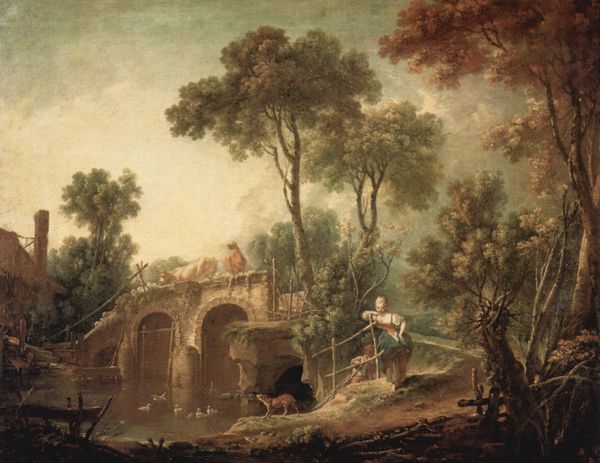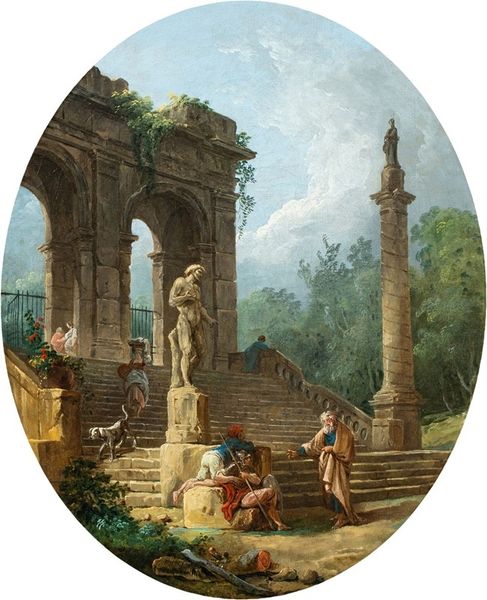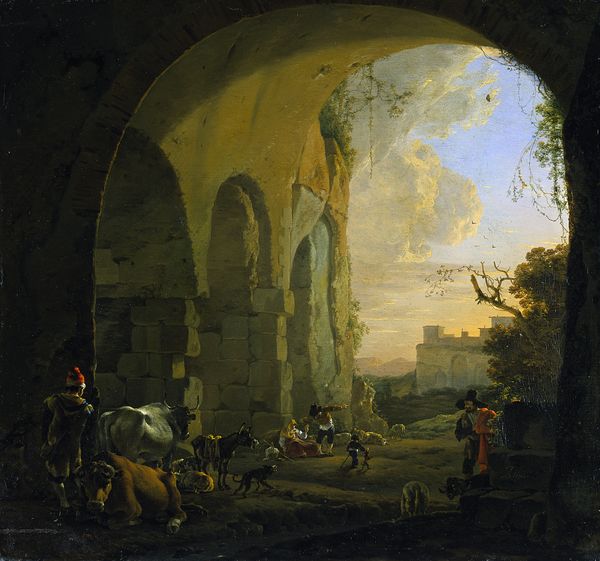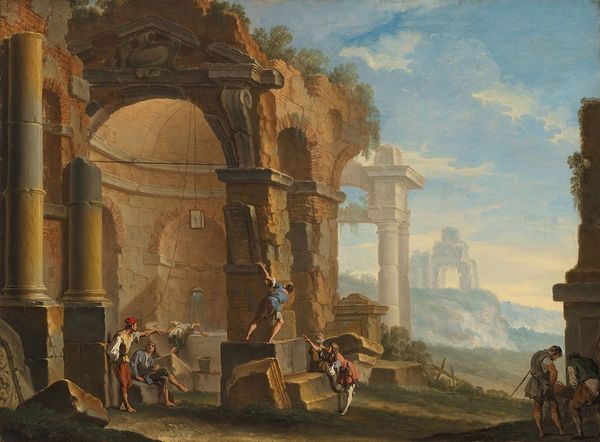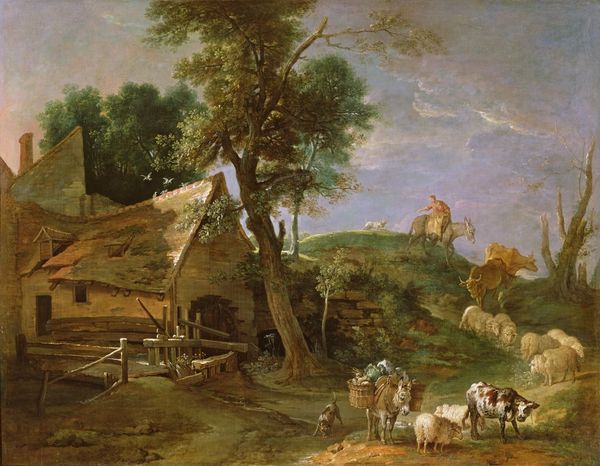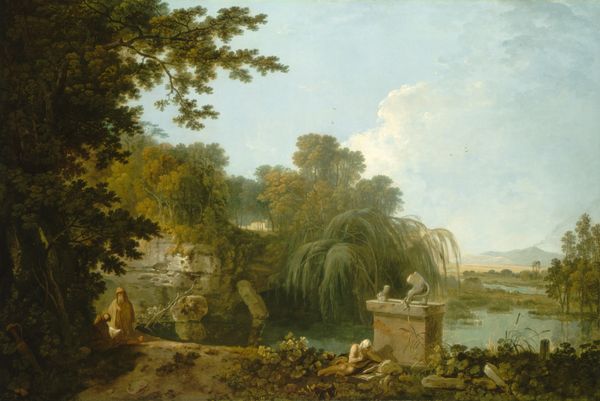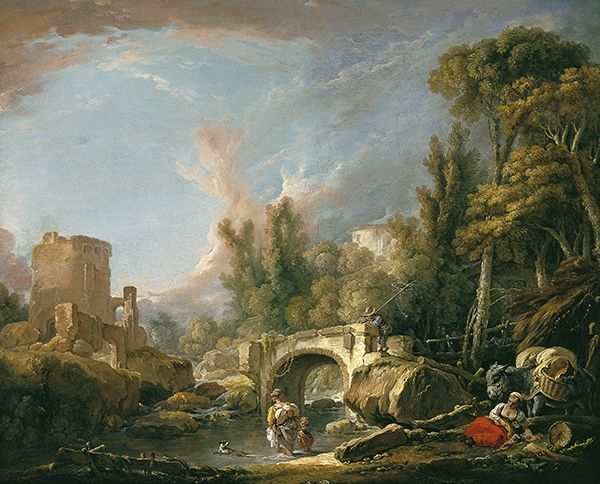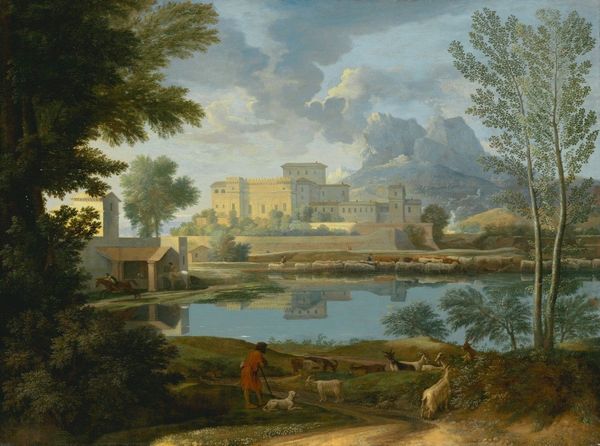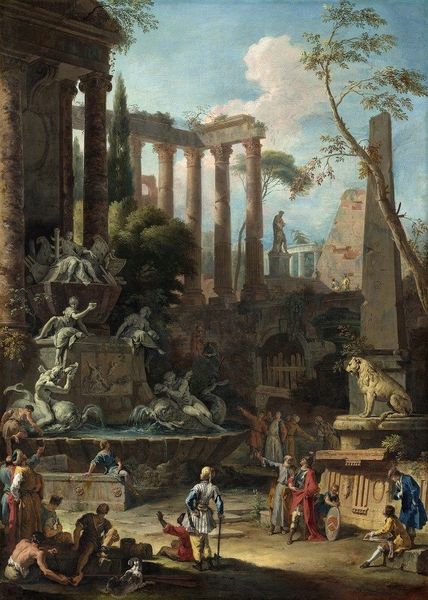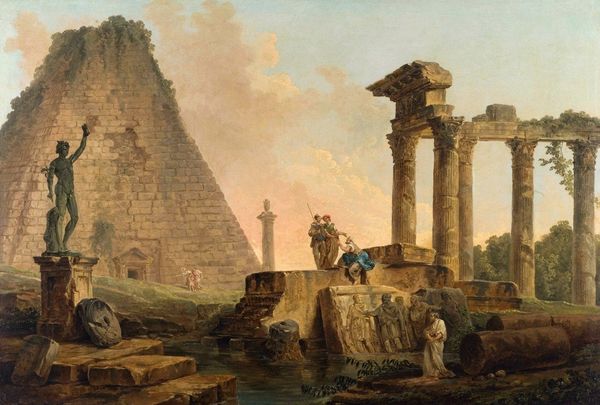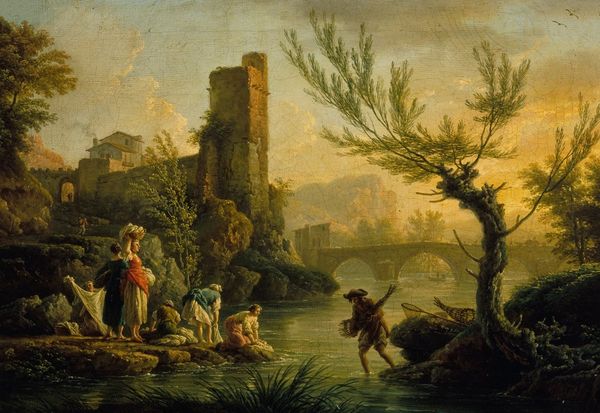
painting, watercolor, sculpture
#
neoclacissism
#
painting
#
sculpture
#
landscape
#
classical-realism
#
oil painting
#
watercolor
#
sculpture
#
watercolour illustration
Copyright: Public Domain: Artvee
Curator: Standing before us is Hubert Robert’s "L’Abreuvoir," created in 1804. It presents a tableau vivant set amidst classical ruins. What’s your initial reaction to this work? Editor: Immediately, I'm struck by this sense of melancholy elegance. The soft palette, the aged stonework – it evokes a kind of serene, nostalgic grandeur. Curator: That resonates. Robert frequently explored the dialogue between nature and architecture, time and memory. Here, you've got this convergence of a classical, almost staged scene, alongside elements of daily life – a watering place as the title tells. This was not long after the height of the French revolution. Editor: Exactly. I think placing a somewhat ordinary activity in such a heightened, romanticized setting is incredibly telling. Robert uses Neoclassical architecture and a rustic scene side by side. Was he idealizing a return to some form of societal order through a classical memory? Curator: Quite possibly. Notice how the statues within their niches seem to oversee the contemporary scene unfolding below. It’s like he’s placing the present under the gaze of the past, inviting comparison. Water is always a symbol of constant renewal in the presence of enduring history, even ruination. Editor: It’s an interesting power dynamic. Are the common people taking precedence over statues, or is it that their stories, just like that of great civilisations will be consigned to the history? Also, in the left corner, a monument dominates that side of the image! Curator: A memorial and figures in the light foreground suggest both lives lived and ones worth remembering for prosperity. We see a very conscious deployment of cultural memory here. It suggests how society processes not just physical monuments, but intangible values like power, freedom, sacrifice. Editor: It also gives a glimpse into how people used and probably transformed spaces filled with 'history.' It grounds us, but it also adds another layer to the nostalgia it conjures. It gives the entire picture a dual nature, making the present almost equal to the ruins behind. Curator: An astute observation. Robert’s 'L’Abreuvoir' serves as a reflective surface. What do we make of the echoes that art, culture, history offer our society now? What's our response when confronting symbols from past civilizations? Editor: Indeed. Hubert Robert doesn't merely depict ruins; he engineers a confrontation between the present and history. It compels us to reconsider how we ourselves will be historically represented and socially valued.
Comments
No comments
Be the first to comment and join the conversation on the ultimate creative platform.
